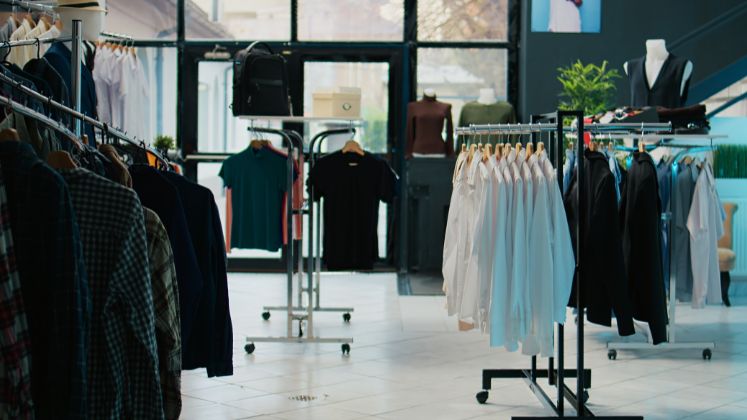The true frontier of fashion retail growth today lies in Tier-2, Tier-3 and Tier-4 cities – vibrant, aspirational markets that are reshaping consumption patterns and brand loyalty in profound ways. However, winning in these geographies requires a fundamentally different approach from metro-centric models.
In smaller towns, an ideal store size ranges between 1,000 to 2,000 square feet. This size strikes a balance between operational efficiency and customer experience. Stores that are too small can feel cramped and difficult to navigate, while overly large stores can dilute sales productivity unless located in a prime, high-traffic area.
A strategic layout prioritising width over depth leverages the shopper’s tendency to engage with window displays and impulse buys. One of our Tier-3 stores in North India consistently achieves Rs.1,350 per sq. ft. monthly with a compact 720 sq. ft. footprint and just two staff members, proof that focused execution and operational agility can yield impressive results. Smaller stores thrive with lean, well-structured teams, typically 5 to 6 members including a Store Manager, Assistant Manager and Sales Associate, with part-time support during peak times.
Franchise Support and Operational Excellence: WhatsApp-based CRM tools enable franchisees to reorder fast-moving items, collect feedback and nurture loyalty with minimal infrastructure. Vernacular onboarding modules and buddy training have halved staff training time.
MONTHLY TARGET: REVENUE PER SQ. FT.GOOD BENCHMARK Rs. 1,000 TO RS. 1,500 PER SQ. FT. BREAK-EVEN CAUTION ZONE Rs. 800 PER SQ. FT. STAR PERFORMER Rs. 1,500 PER SQ. FT. |
Other Trends
1. 2025 Trends: Silver Generation Set To Rule Fashion
2. 2025 Trends: Product discovery and customer service to power growth
3. 2025 Trends: Ethnicwear Set To Shine
4. 2025 Trends: Q-Commerce To Fuel Fashion In Small Cities
Operationally, we control costs by maintaining rent under 10–12% of revenue, negotiating fixed utilities and cross-training employees. Flexible inventory planning is key to matching the variable demand in smaller towns rotating slow-moving products frequently, introducing regional exclusives during local festivals and using adaptable pricing strategies like Rs. 99-style roundings instead of fixed MRPs to drive sales. Regular oversight through WhatsApp check-ins, video audits and physical visits ensure consistency, supported by strict SLAs on key performance indicators.
Smart Merchandising: Fashion preferences in Tier-2, Tier-3 and Tier-4 cities lean toward utility-first. For instance, while five-pocket denim is popular, cross-pocket variants (reflecting a formal-meets-functional style) resonate strongly where shirt-tucking remains common. Consumers in these regions tend to have leaner build, prompting us to tailor fits accordingly. This attentiveness to local preferences builds customer loyalty and repeat business.
Our Bharat stores are larger-format to offer category breadth, aspirational aesthetics and discovery-driven layouts. Merchandising aligns with regional demand—blending bestsellers, impulse buys and quick checkout options alongside ‘shop the look’ zones.
This vision guides our expansion into Bharat with plans to open 100 stores nationwide in the next five years, creating immersive and elevated shopping experiences. Smart assortment curation is vital. Tailoring collections around regional festivals like Pongal, Bihu, Onam and Chhath aligns product offerings with local buying cycles. Fabric choices consider climate-light linens and cottons for coastal zones, heavier fabrics for northern regions. Price sensitivity is key, with Rs. 799 – Rs. 1,299 serving as the sweet spot across most markets. We maintain a fast-moving core of 30% styles, rotating the rest seasonally to keep stores fresh and relevant.
Technology That Empowers: While digital is our DNA, Bharat requires lightweight, mobile-first solutions. We deploy UPI-enabled POS systems and intuitive tools like BillMe for digital receipts to streamline transactions. Our cloud-based inventory sync ensures real-time control and offline-capable POS with barcode scanning addresses connectivity challenges. Staff training leverages vernacular video modules, making digital adoption smooth and effective.







